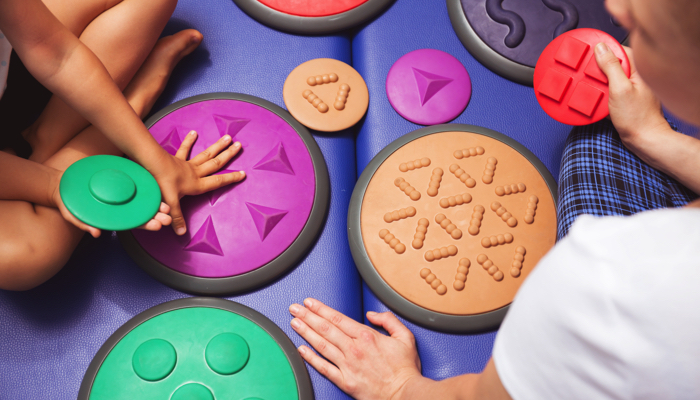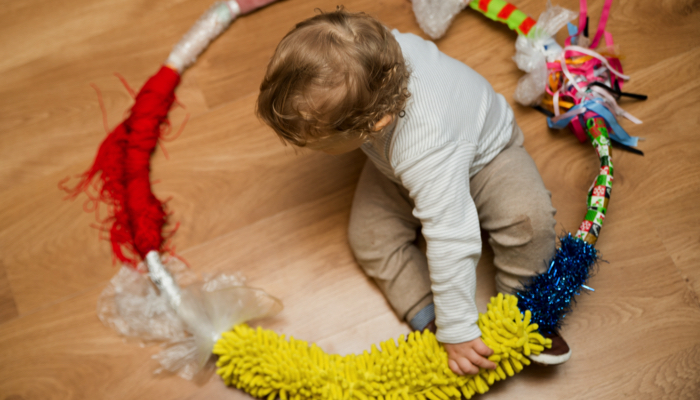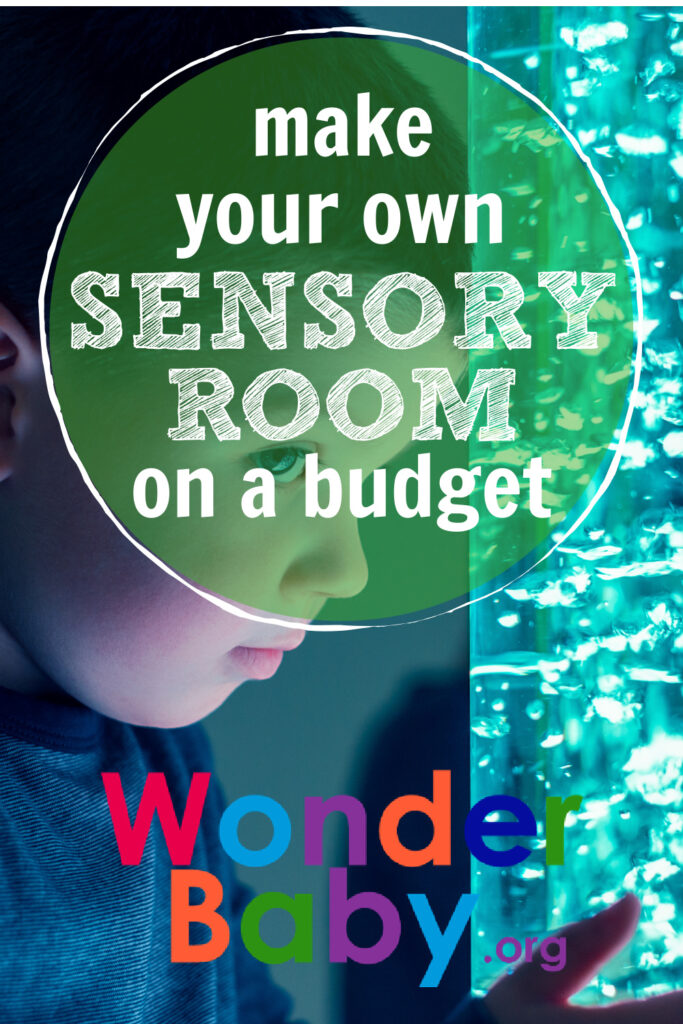Make Your Own Sensory Room on a Budget

This post may contain affiliate links; please see our terms of use for details.
- Sensory rooms allow children with autism, sensory processing disorders or sensory impairments to experience focused sensory input.
- Sensory rooms benefit children in many ways, including allowing for independent movement, soothing troubled behaviors and expanding communication opportunities.
- Sensory rooms can be large rooms or small spaces, giving you the flexibility to build a sensory space that fits your home and your budget.
What is a Sensory Room?
The basic idea behind a sensory room is that it is a special space (usually a large room) where a child with a sensory processing disorder or other sensory impairment can focus on limited sensory stimuli. In other words, rather than being constantly bombarded by disjointed visuals or jarring sounds as we often are in the real world, a child in a sensory room can focus on just the glowing objects on a light table or listen to just the soft sound of a bubble tube.
Sensory rooms often have multiple sensory components, from calming music to fiber optic light strands. They will often include things like ball pits or hammock swings to encourage touch and movement.
Multi-sensory experiences are usually very focused with a goal of preventing kids from becoming overwhelmed or anxious. Many sensory rooms will set up “sensory stations” where kids can concentrate on one activity at a time.
What are the Benefits of a Sensory Room?
Sensory rooms are designed to spark all of your child’s senses, but do so in a focused and concentrated way. This way your child can learn to hone their attention and use their senses effectively without distraction or feeling overwhelmed.
In a sensory room, your child can:
- Find a calming environment where they can recalibrate after a behavior meltdown
- Learn how to move and play with objects independently in a safe space
- Sharpen their focus and attention skills
- Learn to better use their vision if they have CVI
- Experience stimulating activities without being overwhelmed
- Increase vocalizations and enhance communication skills
- Learn to socialize with other children through multi-sensory activities

Inexpensive Sensory Room Ideas
Sensory rooms are often found in specialized school or clinic settings where the facility has the space and funding for a full sensory experience. But what if you want to create a sensory room in your house?
One way to tackle the sensory room challenge is to break down each sensory station into simple (and cheap!) component parts. For example, rather than investing in a large LED bubble wall which can be really expensive, look at getting a smaller inexpensive bubble lamp. The concept is similar, but the size and cost are much more manageable.
Also keep in mind that your sensory room does not have to contain all of these sensory stations. Just think about what would benefit your child most and go with that! Check out these tips from experts for more sensory room ideas.
Visuals & Lights
Keep overall lighting in the room simple and think about painting the walls a dark color so that any items you put in the room will contrast and be easier to see. You could also consider making your own light table. DIY light tables are pretty easy to create and much less expensive than pre-made ones.
Sounds
Many big facility sensory rooms are sound proof in order to maintain a calm and distraction-free environment. Sound proofing a room is probably not in your budget, but if you can find a space that is in a quieter part of your house (like a basement or guest bedroom) that can help with noise reduction. However, acoustic panels can cut down on noise in your room if your house is too loud for a quiet space.
Also remember that water makes a great sound station! Think about adding a small table fountain or an aquarium to your sensory room.
Touch & Compression
It’s actually pretty easy to add tactile components to a sensory room. Visit a fabric store and raid their remnants section looking for fabrics with interesting textures. You can use these fabrics to make pillows or cover poster board to create tactile wall panels. No fabric stores nearby? Hold on to old clothes and use them as fabric sources for your project!
Ball pits are also really easy to recreate at home. All you really need are a bunch of plastic balls and a small kiddie pool and you’ve got an essential and inexpensive sensory touch station.
Fidgets
Fidgets are a great way to add variety to your sensory space. Just get a plastic box and fill it with items that will help calm restless fingers!
Aromatherapy
We sometimes forget to think about smell when designing a sensory space, but having a familiar scent associated with your sensory room can help ground and reassure your child. Some scents (like lavender) are considered calming, while others (like peppermint) are thought to be stimulating, so observe your child for what aroma might be best for them when in their sensory room.
Movement
Adding swings to your sensory room may be the most expensive item on your budget. You’ll probably want to hire a professional if you plan to install a swing hook in your ceiling. Another option would be to purchase a stand-alone indoor swing stand. But once you have that hook or stand you can swap out multiple swing options in your room!
Other smaller movement options might be:

What to Do if You Don’t Have Space for a Sensory Room?
Don’t have space for a big sensory room? Don’t worry! It’s perfectly fine to think small. Look at the options listed above and choose sensory objects that would fit into a smaller space.
Sensory rooms can be condensed into a:
- Sensory wall: If you can’t spare a full room, maybe you can make space along a wall for bookshelves with sensory items always at the ready.
- Sensory corner: Just pick a spot in the corner of one room for a small sensory oasis.
- Sensory table: Maybe you could keep a table in your child’s room with sensory appropriate toys.
- Sensory hula hoop: Attach or hang different textures or sensory toys from a hula hoop and set your child in the center of the hoop or hang it from a door frame and let your child sit underneath the hanging toys.
- Sensory laundry basket: Yep you read that right! If your child can fit in a laundry basket you can attache sensory toys to the inside of the basket for a small, enclosed sensory space. Learn how to make your own sensory laundry basket.
- Sensory box: Sometimes all it takes is a few fidget toys in a box to help your child find that sensory break.
The best part of creating your own sensory space is that you can work within your own budget, space limitations and your child’s personality. You can be creative, while also focusing on your family’s needs.

Related Posts

Behavior
Understanding Intermittent Explosive Disorder in Children
Are you worried about your child’s unexpected aggression and explosive behaviors? Learn how to support a child with intermittent explosive disorder.

Behavior
5 Emotional Regulation Activities for Kids
Want to teach your child how to regulate emotions? Here are emotional regulation activities for kids that can help!

Sensory Activities
5 Sand Play Activities to Encourage Fine Motor Development
Sensory bin, at the beach, or in a sandpit? Try these sand play activities to help toddlers and preschoolers develop their fine motor skills.